
A leading figure in the history of sciences, Marie Curie was prohibited from higher education in her native Poland. Many years later, she became the first woman Nobel laureate. She remains the only person to win the most coveted prize in two different sciences. This is her story.
Childhood
Maria was born in 1867 in Warsaw (Poland) which was then part of the Russian Empire. She was the fifth and youngest child of well-known science professor Władysław Skłodowski. Her mother, Marianna Bronisława operated a reputed boarding school for girls in the big bustling city.
When Maria was seven years old, her eldest sibling died of typhoid and then three years later her mother lost the battle to tuberculosis. At the same time, Władysław was fired from his job due to pro-Polish sentiments and the family eventually lost all the savings.
In the middle of crisis, Władysław decided to join a low-paying teaching job. The Russian authorities at the school banned the usage of laboratory equipment so he brought it home and instructed his children in its use. In this way, Maria was taught to experiment at an early age.
Teenage
Teenage
For some years, Maria was home-schooled. But her father recognized her talent for scientific thinking and learning. Therefore, despite economic troubles, she was admitted to a prestigious learning centre for girls. Maria graduated with a gold medal in 1883 aged sixteen.
She was unable to join any regular institution of higher education because she was a woman. Her father then suggested to join the "secret flying university" a Polish patriotic institution (often in conflict with the governing Russian Empire) which welcomed women students.
During this time, she fell in love with a young man (who'd later go on to become a prominent Polish mathematician), Kazimierz Żorawski, his name. The two discussed marriage, but Żorawski’s parents rejected Marie due to her family's poverty and Kazimierz was unable to oppose them.
She was unable to join any regular institution of higher education because she was a woman. Her father then suggested to join the "secret flying university" a Polish patriotic institution (often in conflict with the governing Russian Empire) which welcomed women students.
During this time, she fell in love with a young man (who'd later go on to become a prominent Polish mathematician), Kazimierz Żorawski, his name. The two discussed marriage, but Żorawski’s parents rejected Marie due to her family's poverty and Kazimierz was unable to oppose them.
Higher education
Maria returned home to her father in Warsaw. The loss of relationship with Żorawski was heartbreaking for her and Władysław was devastated seeing his daughter in pain. Three years later, in 1890, he was able to secure a more lucrative position again and arranged for Maria to reach Paris.
Maria proceeded her studies of physics and chemistry in the University of Paris where she would be known as Marie. She focused so hard on her studies that she sometimes forgot to eat. In 1893, Marie Skłodowska was awarded a degree in physics at age 26.
In 1894, she began her research career with an investigation of the magnetic properties of various steels. That same year French physicist Pierre Curie entered her life; and it was their mutual interest in natural sciences that drew them together.
Marriage
Eventually they began to develop feelings for one another and Pierre proposed marriage. Marie returned to Warsaw and told her father that in Pierre, she had found a new love, a partner, and a scientific collaborator on whom she could depend. Władysław agreed.
But she was still living under the illusion that she would be able to work in her chosen field in Poland. Pierre declared that he was ready to move with her to Poland, even if it meant being reduced to teaching French.
Things hadn't changed though as she was denied again because of her gender. A letter from Pierre convinced her to return to Paris and work with him in his small laboratory. In 1895, they were married and for their honeymoon, took a bicycle tour around the French countryside.

The Curies also got going with their research work in a converted shed (formerly a medical school dissecting room) which was poorly ventilated and not even waterproof. But they were very dedicated scientists and hardly discouraged by such problems.
Radioactivity
In 1896, Henri Becquerel discovered that uranium salts spontaneously emitted a penetrating radiation that could be registered on a photographic plate. Marie was intrigued by this new phenomenon (she coined the term radioactivity) and decided to look into it.
She hypothesized that the radiation was not the outcome of some interaction of molecules but must come from the atom itself. She began studying two uranium minerals, pitchblende and torbernite, and discovered that both pitchblende and torbenite were far more active than uranium itself.
Marie concluded that the two minerals must contain small quantities of radioactive substances other than uranium. In 1898, the couple announced their discovery of Polonium and Radium, elements previously unknown, which were far more active than uranium.

Four years later in 1902, the husband and wife team was able to separate 0.1 gram of radium chloride from a ton of pitchblende, a remarkable achievement, for which the duo shared the Nobel Prize in physics with Henri Becquerel.
The award money allowed the Curies to hire their first laboratory assistant. However, the Curies still did not have a proper laboratory. Upon Pierre Curie's complaint, the University of Paris relented and agreed to create a new laboratory, but it would not be ready until 1906.
In 1906, walking across a street of Paris in heavy rain, Pierre was struck by a horse-drawn vehicle and fell under its wheels, causing his skull to fracture. Marie, by then a mother to two beautiful daughters, Irène and Ève, was traumatized by her husband's death.
She continued to work in the new laboratory hoping to reach greater heights in physics and chemistry as a tribute to her husband Pierre. In 1910, she isolated the pure radium metal; and also defined a new unit of radioactivity called "curie" in the memory of her late husband.
Affair & death
In 1911, Marie was on the front pages of local tabloids as a "foreign home-wrecker" after having an affair with French physicist Paul Langevin, a married man who was estranged from his wife. The news was exploited by her academic opponents, one declaring her "a detestable idiot."
There's no denying that the affair was painful for Langevin’s family, particularly for his wife, Jeanne, but at the time when the news broke out, Marie was giving a lecture in Brussels. And when she returned to Paris, she found an angry crowd outside of her house and had to seek refuge, with her little daughters.
The Swedish Academy of Sciences honored her a second time despite the Langevin Scandal. She was awarded the Prize in Chemistry for isolating radium hence becoming the only person to win Nobel Prize in two different sciences.
A month after accepting her 1911 Nobel Prize, she was hospitalized with depression and a kidney ailment. During her time at the hospital, she received a letter from Einstein, essentially saying, "please ignore the haters." Marie returned to her laboratory after a gap of about 14 months.
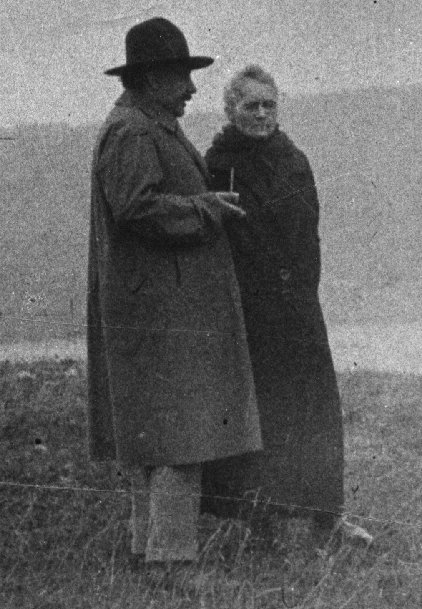
From then onwards, it became very difficult to focus on the sciences and even more so during the World War I. Also perhaps because Marie could not forgive herself after the incident. The war ended, and she was invited to Warsaw in a ceremony, laying the foundations of the Radium Institute.
Curie visited Poland for the last time in early 1934 (before the second world war) where she died of aplastic anemia, a condition due to long exposure to radiation. Her final resting place was decided Paris Panthéon alongside her husband Pierre. In 1935, a life-size statue of Maria Skłodowska Curie was established in a Warsaw park facing the Radium Institute.
Personality
She used to wear the same dress to laboratory every day, "If you are going to be kind enough to give me one," she instructed regarding a proposed gift for her wedding, "please let it be practical and dark so that I can put it on afterwards to go to the laboratory."
She refrained from patenting the radium-isolation process, so that the scientific community could do their research unhindered. Scientific endeavors were more dear to her than monetary benefits. In fact, she even gave much of her Nobel Prize money to friends, family, students, and research associates.

The curies were not religious and Marie was agnostic by choice. Neither wanted a religious service for their marriage ceremony. She wore a dark blue outfit, instead of a bridal gown, which would be worn by her in the lab for years to come. One of the guests quipped, "Skłodowska is Pierre's biggest discovery."
Today, the radium is used to produce radon, a radioactive gas which is used to treat some types of cancer. At the time of their discovery, a new industry began developing, based on radium (as in self-luminous paints for watches), but the Curies did not patent their discovery and benefited little from this increasingly profitable business.
Marie had the strong conviction that her work would provide important benefits for the rest of humanity, "I am one of those who think that the world will draw more good than evil from new discoveries," her passion for science was aroused in her early years, and remained intact until her last breath.
In her final years, she advocated bravely for invoking a scientific approach in the people, "Nothing in life is to be feared, it is only to be understood. Now is the time to understand more, so that we may fear less," she would say.
Maria returned home to her father in Warsaw. The loss of relationship with Żorawski was heartbreaking for her and Władysław was devastated seeing his daughter in pain. Three years later, in 1890, he was able to secure a more lucrative position again and arranged for Maria to reach Paris.
 |
| Maria and her father |
Maria proceeded her studies of physics and chemistry in the University of Paris where she would be known as Marie. She focused so hard on her studies that she sometimes forgot to eat. In 1893, Marie Skłodowska was awarded a degree in physics at age 26.
In 1894, she began her research career with an investigation of the magnetic properties of various steels. That same year French physicist Pierre Curie entered her life; and it was their mutual interest in natural sciences that drew them together.
Marriage
Eventually they began to develop feelings for one another and Pierre proposed marriage. Marie returned to Warsaw and told her father that in Pierre, she had found a new love, a partner, and a scientific collaborator on whom she could depend. Władysław agreed.
But she was still living under the illusion that she would be able to work in her chosen field in Poland. Pierre declared that he was ready to move with her to Poland, even if it meant being reduced to teaching French.
Things hadn't changed though as she was denied again because of her gender. A letter from Pierre convinced her to return to Paris and work with him in his small laboratory. In 1895, they were married and for their honeymoon, took a bicycle tour around the French countryside.

The Curies also got going with their research work in a converted shed (formerly a medical school dissecting room) which was poorly ventilated and not even waterproof. But they were very dedicated scientists and hardly discouraged by such problems.
Radioactivity
In 1896, Henri Becquerel discovered that uranium salts spontaneously emitted a penetrating radiation that could be registered on a photographic plate. Marie was intrigued by this new phenomenon (she coined the term radioactivity) and decided to look into it.
She hypothesized that the radiation was not the outcome of some interaction of molecules but must come from the atom itself. She began studying two uranium minerals, pitchblende and torbernite, and discovered that both pitchblende and torbenite were far more active than uranium itself.
Marie concluded that the two minerals must contain small quantities of radioactive substances other than uranium. In 1898, the couple announced their discovery of Polonium and Radium, elements previously unknown, which were far more active than uranium.

Four years later in 1902, the husband and wife team was able to separate 0.1 gram of radium chloride from a ton of pitchblende, a remarkable achievement, for which the duo shared the Nobel Prize in physics with Henri Becquerel.
The award money allowed the Curies to hire their first laboratory assistant. However, the Curies still did not have a proper laboratory. Upon Pierre Curie's complaint, the University of Paris relented and agreed to create a new laboratory, but it would not be ready until 1906.
In 1906, walking across a street of Paris in heavy rain, Pierre was struck by a horse-drawn vehicle and fell under its wheels, causing his skull to fracture. Marie, by then a mother to two beautiful daughters, Irène and Ève, was traumatized by her husband's death.
She continued to work in the new laboratory hoping to reach greater heights in physics and chemistry as a tribute to her husband Pierre. In 1910, she isolated the pure radium metal; and also defined a new unit of radioactivity called "curie" in the memory of her late husband.
Affair & death
In 1911, Marie was on the front pages of local tabloids as a "foreign home-wrecker" after having an affair with French physicist Paul Langevin, a married man who was estranged from his wife. The news was exploited by her academic opponents, one declaring her "a detestable idiot."
There's no denying that the affair was painful for Langevin’s family, particularly for his wife, Jeanne, but at the time when the news broke out, Marie was giving a lecture in Brussels. And when she returned to Paris, she found an angry crowd outside of her house and had to seek refuge, with her little daughters.
The Swedish Academy of Sciences honored her a second time despite the Langevin Scandal. She was awarded the Prize in Chemistry for isolating radium hence becoming the only person to win Nobel Prize in two different sciences.
A month after accepting her 1911 Nobel Prize, she was hospitalized with depression and a kidney ailment. During her time at the hospital, she received a letter from Einstein, essentially saying, "please ignore the haters." Marie returned to her laboratory after a gap of about 14 months.

From then onwards, it became very difficult to focus on the sciences and even more so during the World War I. Also perhaps because Marie could not forgive herself after the incident. The war ended, and she was invited to Warsaw in a ceremony, laying the foundations of the Radium Institute.
Curie visited Poland for the last time in early 1934 (before the second world war) where she died of aplastic anemia, a condition due to long exposure to radiation. Her final resting place was decided Paris Panthéon alongside her husband Pierre. In 1935, a life-size statue of Maria Skłodowska Curie was established in a Warsaw park facing the Radium Institute.
Personality
She used to wear the same dress to laboratory every day, "If you are going to be kind enough to give me one," she instructed regarding a proposed gift for her wedding, "please let it be practical and dark so that I can put it on afterwards to go to the laboratory."
She refrained from patenting the radium-isolation process, so that the scientific community could do their research unhindered. Scientific endeavors were more dear to her than monetary benefits. In fact, she even gave much of her Nobel Prize money to friends, family, students, and research associates.

The curies were not religious and Marie was agnostic by choice. Neither wanted a religious service for their marriage ceremony. She wore a dark blue outfit, instead of a bridal gown, which would be worn by her in the lab for years to come. One of the guests quipped, "Skłodowska is Pierre's biggest discovery."
Today, the radium is used to produce radon, a radioactive gas which is used to treat some types of cancer. At the time of their discovery, a new industry began developing, based on radium (as in self-luminous paints for watches), but the Curies did not patent their discovery and benefited little from this increasingly profitable business.
Marie had the strong conviction that her work would provide important benefits for the rest of humanity, "I am one of those who think that the world will draw more good than evil from new discoveries," her passion for science was aroused in her early years, and remained intact until her last breath.
In her final years, she advocated bravely for invoking a scientific approach in the people, "Nothing in life is to be feared, it is only to be understood. Now is the time to understand more, so that we may fear less," she would say.







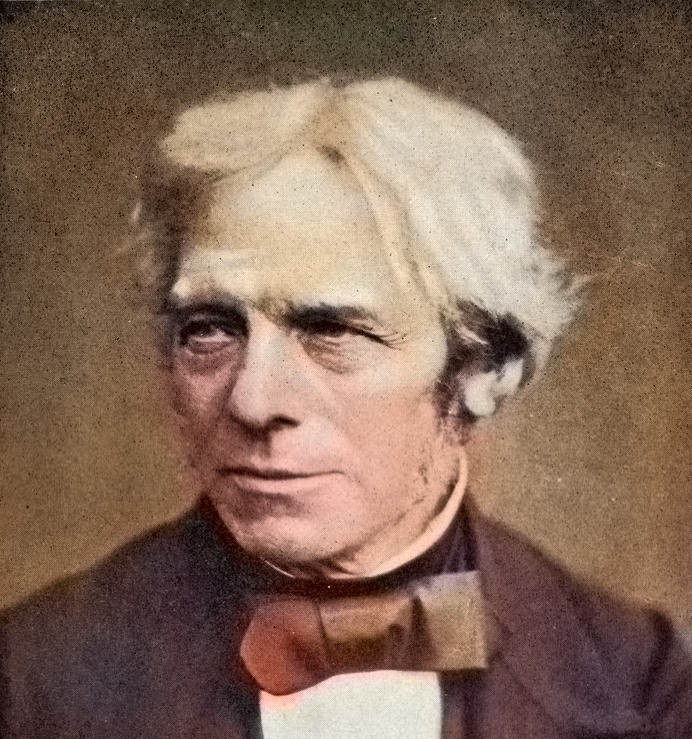



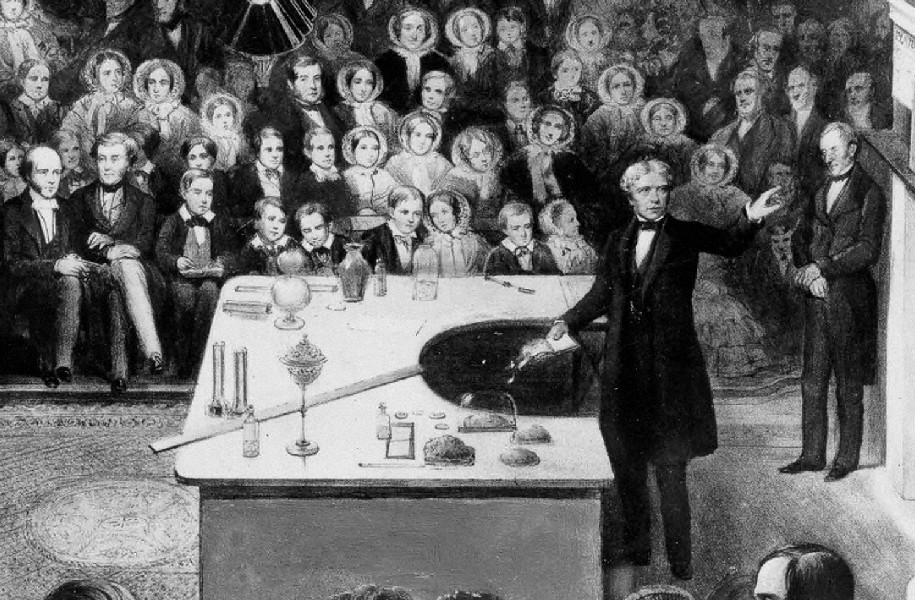



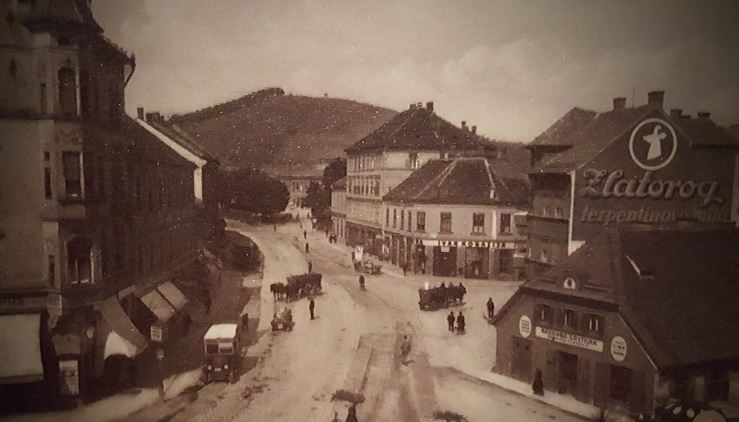











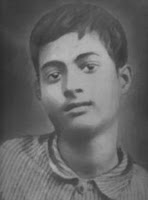


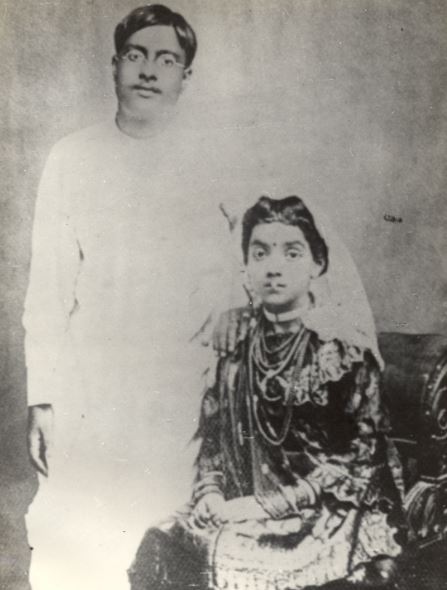

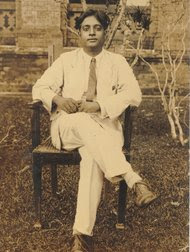
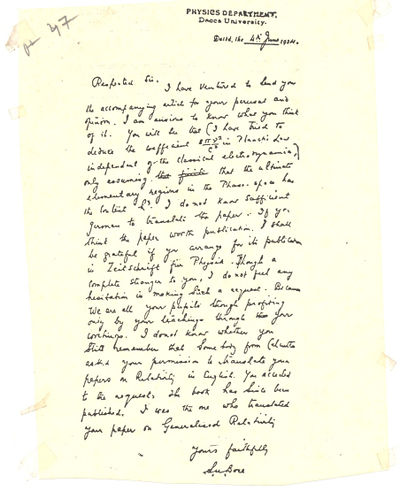








 Physics, astronomy and science history blog for students
Physics, astronomy and science history blog for students